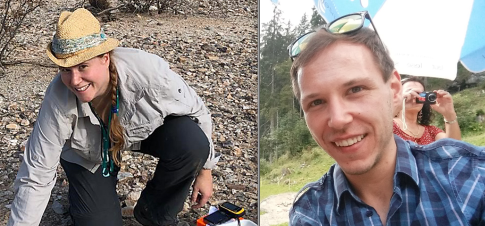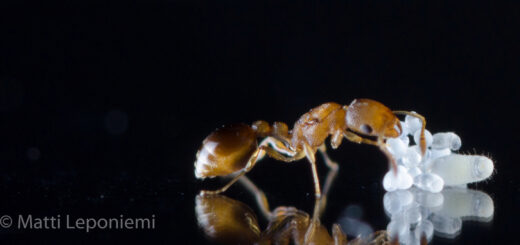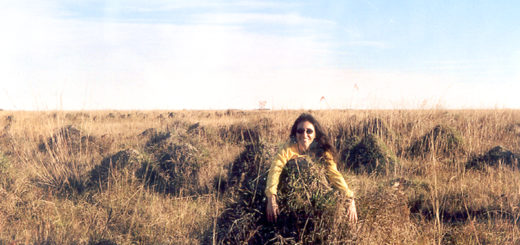Interview with Fabiana Cuezzo
Fabiana Cuezzo is a biologist at the National University of Tucumán, a little town located in the north of Argentina, doing ant research and teaching Entomology for undergraduate and postgraduate students. In this interview, we talk about her research, what motivates her to work with ants, and how she ended up studying ants.
An Interview compiled by Emeline Favreau and Patrick Krapf

MNB: Hi. Thank you for giving us an interview. Let’s start with something easy. Could you tell us about your research?
FC: Originally, I had the monumental task to put in order and actualize one of the big ant collections of South America developed by Nicolas Kusnezov. But actually, I’m working on the taxonomy and biodiversity of Neotropical ants.
MNB: Oh wow. And how did you end up studying ants?
FC: My passion for the ants was awakened during a magnificent talk of one of my entomology professors at the University: Dr. Abraham Willink. I still remember his talk about social insects, telling us about communication, kin selection, and how few studies, especially referring to their biology had been developed in Argentina. All transmitted with such passion and enthusiasm that it was almost impossible for me to resist starting to investigate the subject.
MNB: Sounds amazing. If you had not become a myrmecologist, what else would you have liked to become?
FC: Maybe conservationist, but musician would be a possibility too. I like arts in all shapes and forms.
MNB: What is your motivation for doing ant research now?
FC: The huge lack of knowledge of the Argentine ant fauna, especially referring to its ecology and geographic distributional patterns.
MNB: And what do you enjoy most about ant research?
FC: Certainly fieldwork, but also to work in the lab, identifying ants and discovering morphological structures, adaptations, etc.
MNB: I also really enjoy fieldwork. And what was the biggest obstacle you had to overcome in ant research?
FC: Perhaps being able to persist in the system and working in an economically unstable country.

MNB: Who or what inspired you to pursue a career in myrmecology?
FC: I believe that the passion that I find in every myrmecologist I met, especially those who work in South America.
MNB: If you could start all over again, would you do something differently?
FC: To establish more fluid communications with my colleagues since the beginning of my career.
MNB: During your research, what was the moment you enjoyed most?
FC: Several, especially those sharing with other colleagues during some of the International ant meetings in Brazil.
MNB: That sounds amazing, yes. If you have a difficult problem to solve, is there any particular situation in which you typically have the crucial idea for solving it?
FC: Probably very early in the morning or during night-time sleep.
MNB: What are the main differences regarding research when you started as a myrmecologist compared with today?
FC: I think the huge advances in lab technology and the development of very fast communication, both results and with colleagues.
MNB: Yes, that seems true. And what do you think will be hot topics in ant research in the next ten years?
FC: I believe that the progress and relatively low costs of molecular studies have inclined research in some way towards these topics, especially with regard to Systematics. Nowadays morphology, caste association, and natural history studies need to be revalued.
MNB: Do you have any suggestions for myrmecology newbies?
FC: Work with passion, tirelessly, joining a group if possible and collaborate with your colleagues in any way you can. And enjoy it!

MNB: That is so important, yes. Now a slightly different topic. The higher the career level, the fewer women, also in ant research – what do you think will be most important for achieving gender equality in this respect?
FC: Fortunately, I have not felt it in my professional development, but I believe that equal access to opportunities, especially salaries and positions of choice, would be an excellent way to minimize this gender inequality.
MNB: Tying to the question above: Does your group harbour students or postdocs with kids?
FC: Yes, at my institute.
MNB: What question are you asked most often when people hear you work with ants?
FC: It depends on what kind of people, the non-biologists probably ask me: What do they eat? And how do I get them out of my kitchen?
MNB: Classic. J And what is the one thing you wish everyone knew about ants?
FC: How they cooperate to reach a goal and how valuable they are as ecosystem engineers.
MNB: Do you have a favourite morphological structure / myrmecological phenomenon?
FC: Psammophore in desert ants [MNB: Psammophore means ‘sand carrying’ in Greek. The name Pogonomyrmex itself (also from the Greek) is a reference to this structure – Pogonomyrmex means ‘bearded ant’. The psammophore consists of long curved hairs extending from the ventral surface (underside) of the head that collectively form a basket-like structure that is used to carry loose sand].
MNB: Do you have a favourite ant species?
FC: Yes, of course: Dorymyrmex planidens is one of my favourites.
MNB: In another life, if you could be an ant, what ant species would that be?
FC: Maybe a soldier of any Cephalotes species.

MNB: What is the book on your bedside table?
FC: It depends on my mood. But “Naturalist” by E. Wilson is one of my favourites.
MNB: Watching sports or doing sports?
FC: Doing sports, especially swimming.
MNB: Listening to music or playing an instrument?
FC: Both.
MNB: Do you enjoy the evening or the morning?
FC: The morning.
MNB: Tea or coffee?
FC: Both, and “mate” of course! ( = an infusion made with Ilex paraguayensis leaves, common in Paraguay, Uruguay, in the South of Brazil, and Argentina).
MNB: Habit or change, what do you prefer?
FC: I think both are good in their right measure.
MNB: Cooking yourself or going out having dinner?
FC: Cooking myself.
MNB: Aspirator or forceps?
FC: Aspirator.
MNB: Nest densities or pitfall traps, what do you prefer?
FC: Pitfall traps.
MNB: Fieldwork or lab?
FC: Fieldwork!
MNB: Pin or ethanol?
FC: Pin.
MNB: Paper printed out or reading on the laptop?
FC: Reading on the laptop.
MNB: Journals financed by the author (open access) or by the reader (subscription-based). What do you prefer?
FC: I prefer real Open access, as defined here: a mechanism by which research outputs are distributed online, free of costs or other barriers.
MNB: Kin selection or group selection?
FC: Kin selection.
MNB: Do you prefer monodomy or supercoloniality?
FC: Monodomy.
MNB: Do you prefer the workers or the queens in an ant colony?
FC: Workers.
MNB: Thank you so much for this nice interview!






Fabiana, que maravilla saber de ti! Un abrazo.